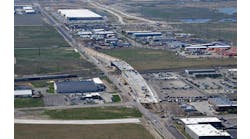On September 9, I celebrated my first anniversary of being in this role.
That means two things: First, I can’t use the “I’m new here” excuse anymore. I’m sad to see it go. Second, it’s time to examine how my view of the industry has evolved.
After the new infrastructure law, the labor shortage has defined my first year. Last September, I thought the labor shortage was due to a failure in education, but my understanding of that stopped at the obvious: The education system breeds a culture that stigmatizes a trade career path, while also pushing the virtues of a four-year college degree that hands students massive debt.
I soon realized this failure is system-wide, as vocational-technical classes aren’t as available in junior high and high schools as they once were, and these trade schools aren’t readily accessible for high school graduates, either.
However, a lack of education isn’t the only reason the construction industry had 440,000 job openings in April.
Job retention is a problem. Workers in the industry between the ages of 18 and 24 are moving on to different careers. Meanwhile, a wave of people retired during the pandemic. Plus, supply chain issues and the rising cost of materials delay jobs and spend money that could have been used to pay additional workers.
And then there’s marijuana. Recreational use of the drug is legal in half the country. The nationwide increase in marijuana usage puts pressure on hiring practices, as most in the industry require pre-employment drug tests. I completely understand why. Stoned operators using construction equipment is a scary thought. But marijuana field test kits exist now, So maybe it’s time to discuss a compromise on this topic to solve the labor shortage?
That’s just another slice of the labor shortage pie, though. After education, I think the biggest reason is diversity. There are about 10.8 million people employed in the construction industry, and nearly 90% are white and just 11% are women, according to the Department of Labor.
She Built This City, a Charlotte-based nonprofit organization, trains women and girls for careers in the construction and trade industry. There are many similar programs out there, like Power UP in Alabama, but we need a lot more.
And the industry also needs to hire more minorities. If 90% of your workforce is white in 2022, it’s a decision without a reasonable excuse. The industry has become more inclusive recently. However, the bipartisan Infrastructure and Investment Jobs Act will create an estimated two million jobs per year over the next decade, many of which will be in our industry.
It begs the question: What are your recruitment practices? If you participate in a training program or have recently changed your recruitment strategies, please reach out to me. This topic isn’t going away, and I’d love to highlight those who are helping to solve the problem.



